The Q4 2024 national accounts reported that Australian real per capita household consumption had fallen for eight consecutive quarters:
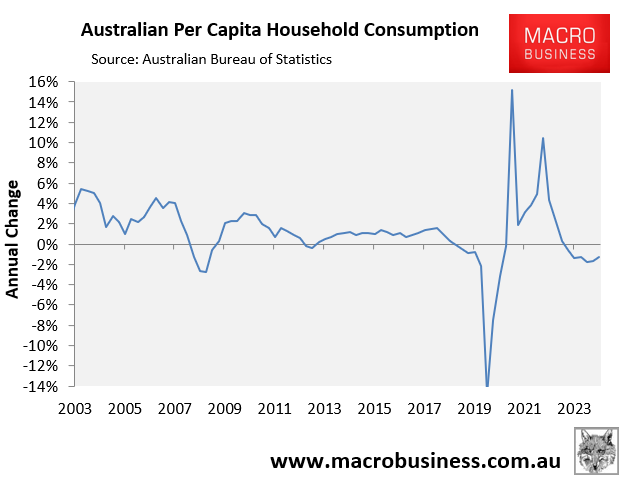
This decline in consumption was in response to an 8% decline in real per capita household disposable incomes:
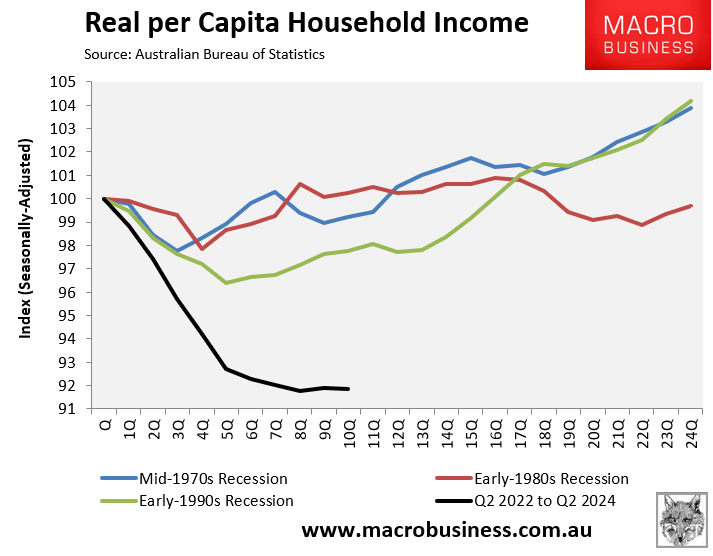
It was also in response to the recent surge in mortgage and rental payments:
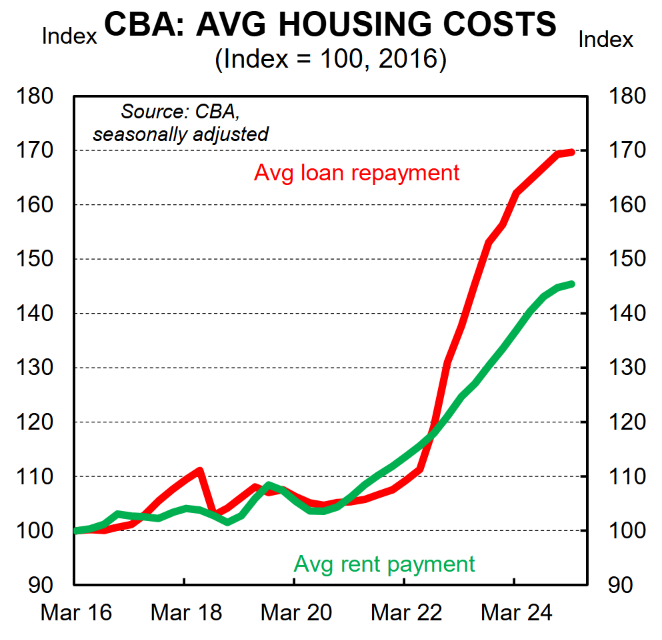
Westpac has released survey data suggesting that “close to 80% of the income gains from last year’s tax cuts have been saved so far”.
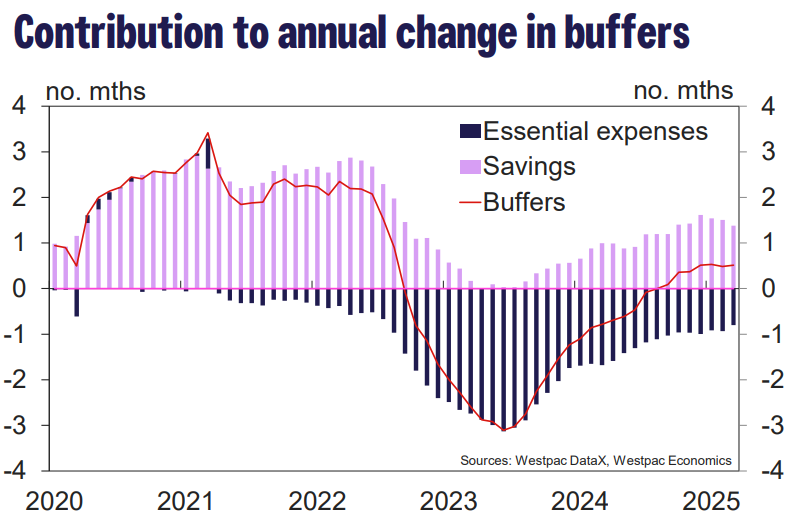
Westpac’s consumer spending indicator (CSI) “is consistent with per capita spend declining at a 2% annual pace”.
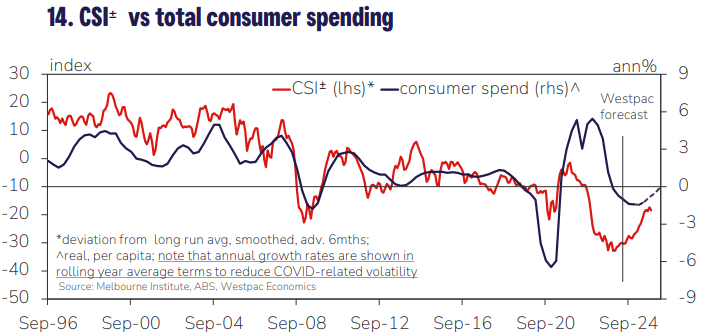
“The wider picture continues to be one of improving incomes but with households putting much of this towards saving and rebuilding financial buffers rather than spending”, Westpac economics notes.
CBA’s household spending insights showed a similar reluctance to spend, with the marginal propensity to consume (MPC) since the 1 July 2024 Stage 3 tax cuts estimated to be only 38%:
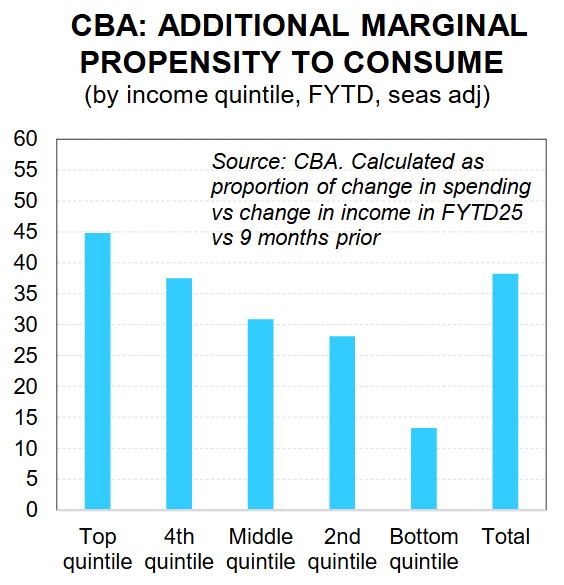
CBA also showed a strong flow of extra payments into CBA mortgage offset and redraw accounts so far in 2025.
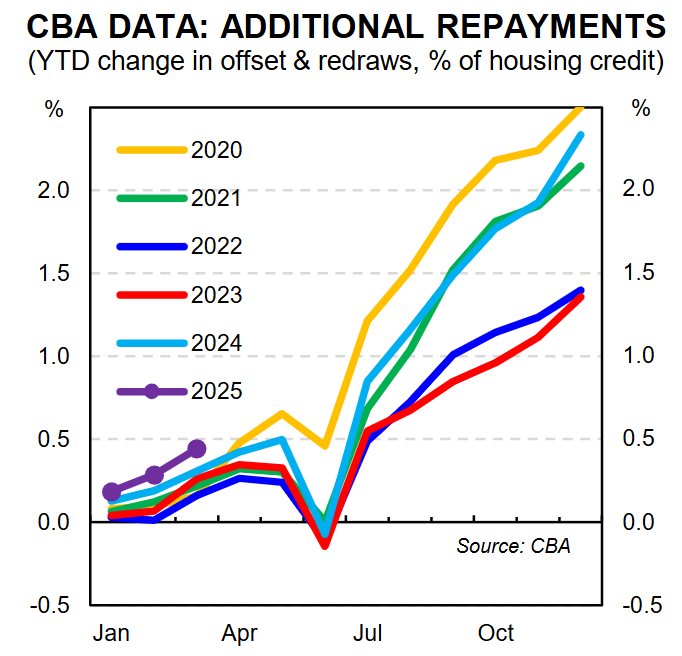
“The ongoing lift in prepayments in offset & redraw accounts reflect the high opportunity cost of not doing so, given where interest rates are currently”, CBA senior economist Belinda Allen explained.
“The March data suggests this continued to occur after the reduction in the cash rate in February”.
The upshot is that consumer spending is likely to remain muted even with additional rate cuts from the RBA.

